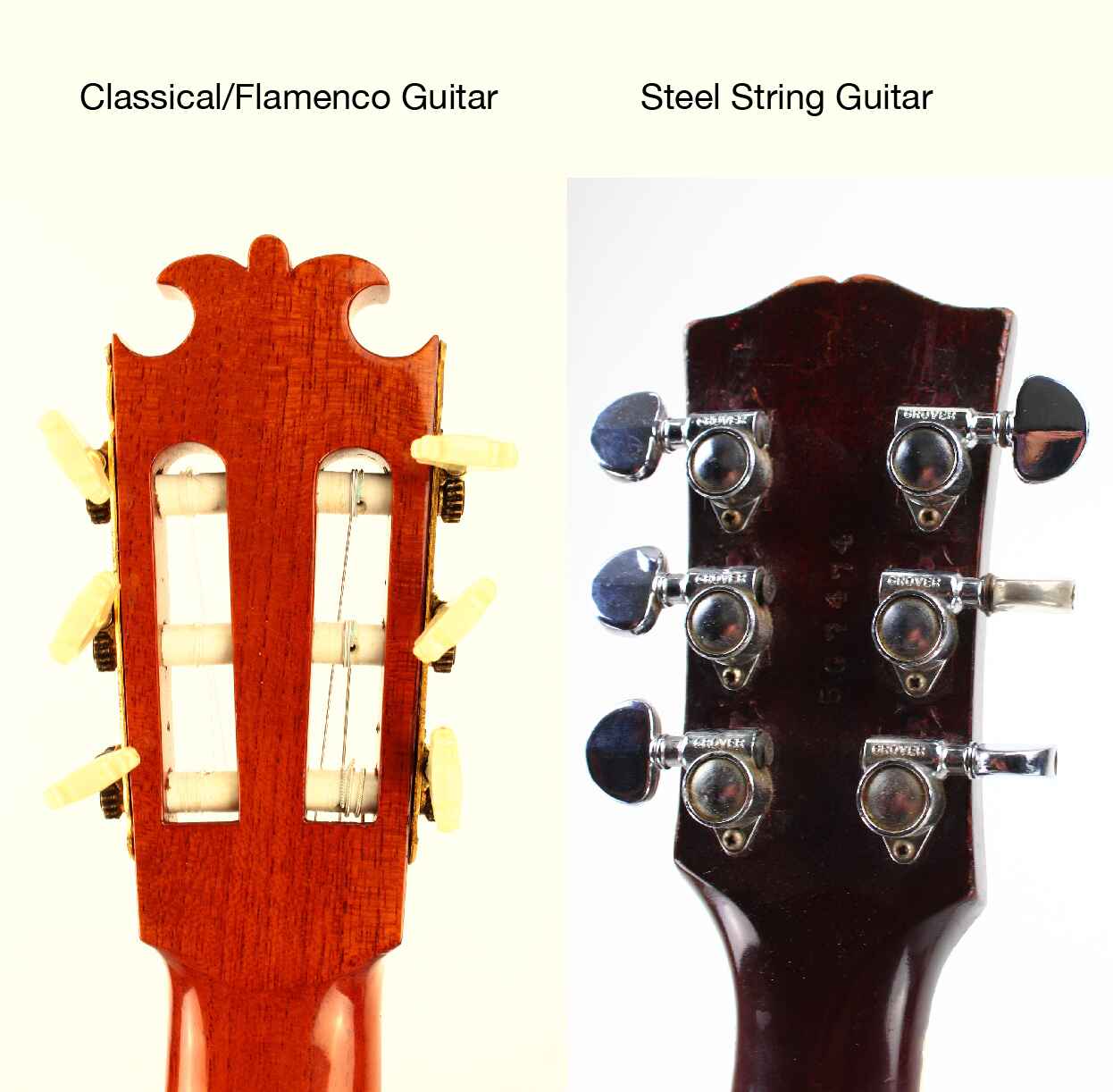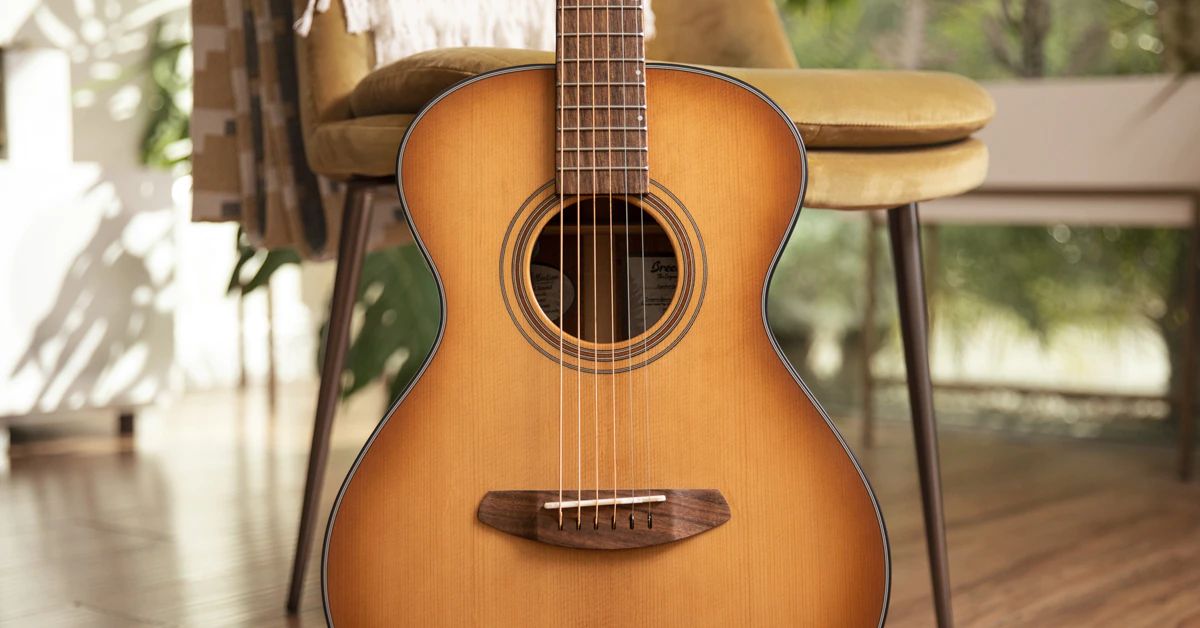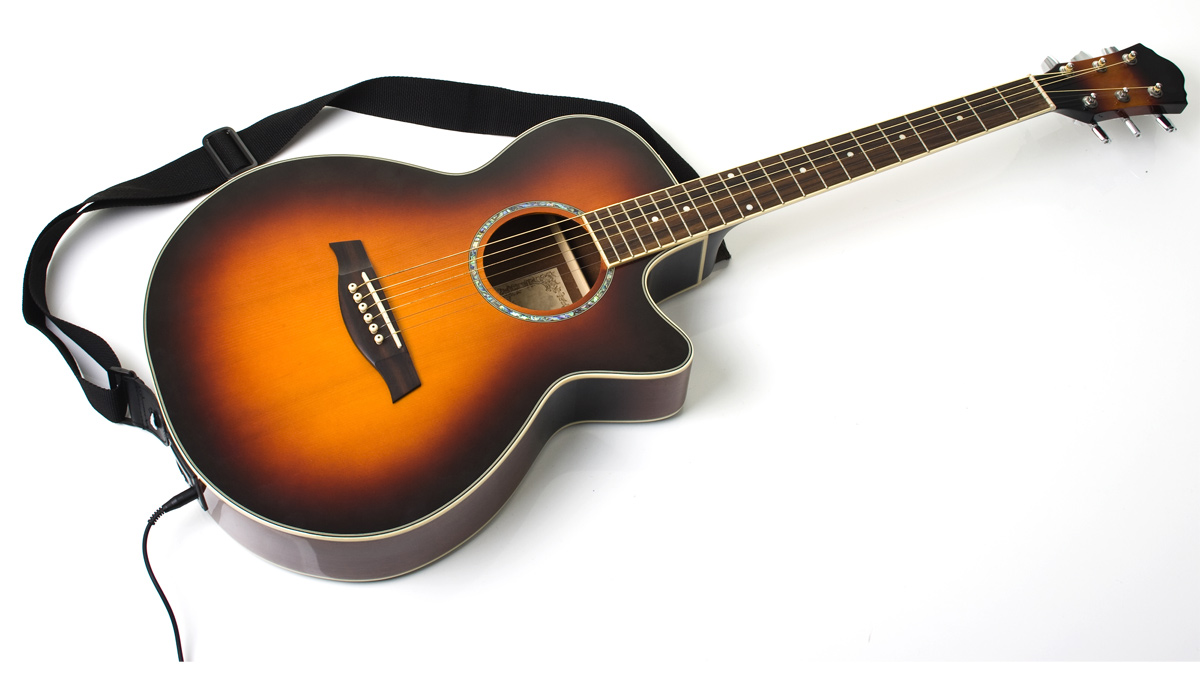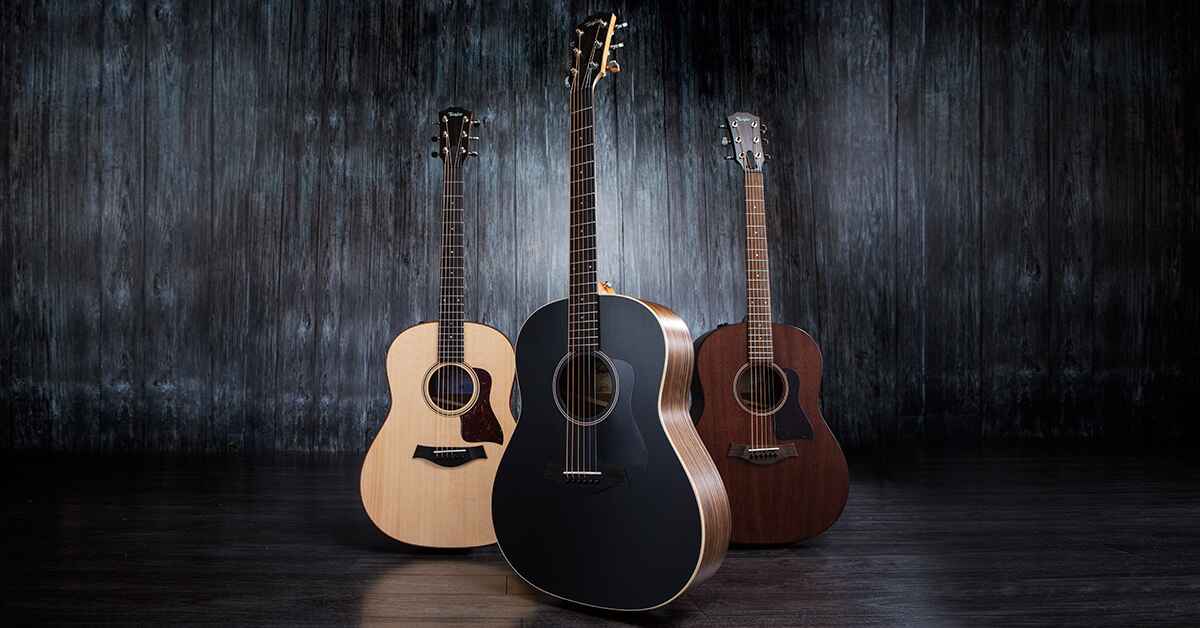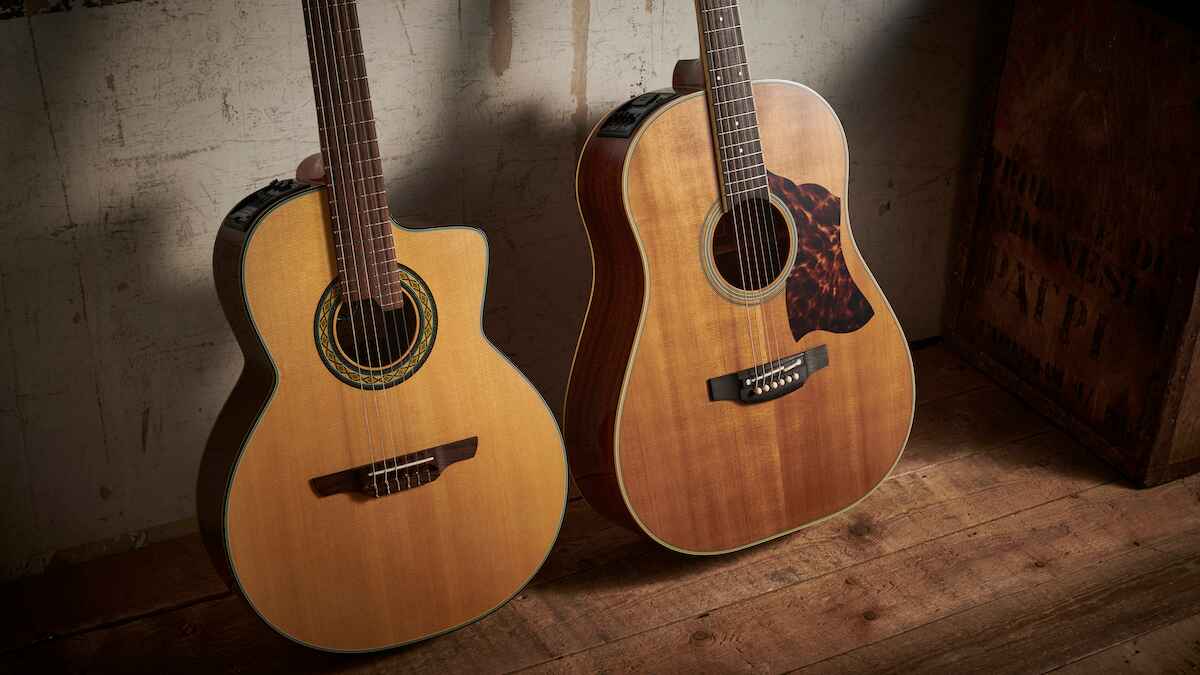Introduction
When it comes to guitars, two of the most commonly known types are the classical guitar and the acoustic guitar. While they may look similar at first glance, there are distinct differences between these two instruments that can greatly impact their sound, playing style, and even their price range. Whether you’re a beginner looking to purchase your first guitar or a seasoned player interested in expanding your collection, understanding the differences between classical and acoustic guitars is essential.
Firstly, it’s important to note that classical and acoustic guitars belong to different musical traditions. The classical guitar, also known as the Spanish guitar, has a rich history rooted in classical and flamenco music. It features nylon strings and is often associated with intricate fingerpicking techniques. On the other hand, the acoustic guitar, also referred to as a steel-string guitar, is commonly used in various genres like folk, country, and rock. It utilizes steel strings that produce a brighter and louder sound compared to the nylon strings of a classical guitar.
Another key distinction lies in the construction and materials of these guitars. Classical guitars typically have a smaller and lighter body made of thin wood, such as cedar or spruce, which contributes to a warmer and mellower tone. They also feature a wider neck with a flat fretboard, allowing for easier finger placement and chord shapes. In contrast, acoustic guitars have a larger body made of different types of wood, such as mahogany, rosewood, or maple, that produce a brighter and more booming sound. The neck is narrower, and the fretboard has a slight curvature, suited for a variety of playing techniques including strumming and fingerpicking.
Construction and Materials
The construction and materials of classical and acoustic guitars play a significant role in shaping their sound and overall playing experience. Classical guitars typically have a smaller body compared to acoustic guitars. This smaller size allows for a more intimate and rounded sound, making it well-suited for solo performances in smaller venues or intimate settings.
Classical guitars are traditionally made with thin wood, such as cedar or spruce, for the top or soundboard, which is responsible for resonating and amplifying the vibrations of the strings. The back and sides of the guitar are often made of rosewood, mahogany, or maple, providing stability and enhancing the tone. The use of nylon strings further contributes to the warm and mellow sound characteristic of classical guitars.
On the other hand, acoustic guitars are typically larger in size and feature a different construction. The top of an acoustic guitar is usually made of spruce, which is known for its ability to produce a clear and vibrant sound. The back and sides can be made of various wood types, including mahogany, rosewood, and maple, each imparting its own unique tonal qualities to the instrument.
Acoustic guitars use steel strings instead of nylon, which have a greater tension and produce a brighter and louder sound. The combination of the larger body size, construction materials, and steel strings gives acoustic guitars a wide dynamic range and a more powerful projection, making them suitable for playing in larger venues or when accompanied by other instruments.
It’s worth noting that the construction and materials also affect the playability and feel of the guitars. Classical guitars typically have a wider neck and a flat fretboard, making it easier to fret individual notes and perform complex fingerstyle techniques. Acoustic guitars, on the other hand, have a narrower neck and a slightly curved fretboard, allowing for easier chording and strumming patterns.
Size and Shape
When comparing classical guitars to acoustic guitars, one noticeable difference is the size and shape of the instruments. Classical guitars typically have a more compact and slender body shape, often referred to as a “concert” or “parlor” size. This design makes them comfortable to hold and maneuver, particularly for players with smaller hands or those who prefer a more intimate playing experience.
In contrast, acoustic guitars are generally larger and feature a full-size body, commonly referred to as a “dreadnought” or “jumbo” size. This larger body shape provides a greater resonating chamber, allowing the guitar to produce more volume and a fuller sound.
The difference in size and shape also affects the overall weight of the guitars. Classical guitars tend to be lighter and more portable, making them ideal for musicians who are frequently on the move or prefer to travel with their instrument. Acoustic guitars, on the other hand, can be heavier due to their larger size and solid wood construction. While this may make them less portable, it also contributes to their robust and powerful sound.
It’s important to consider the size and shape of the guitar based on your playing preferences and physical attributes. If you prioritize comfort and ease of playing, a classical guitar’s smaller body size may be ideal. On the other hand, if you require a louder and more projecting sound, an acoustic guitar’s larger body might better suit your needs.
It’s worth mentioning that there are also variations of both classical and acoustic guitars with different body shapes, such as “cutaway” designs or smaller sized acoustic guitars known as “folk” or “travel” guitars. These variations offer additional options for players seeking specific features or tonal characteristics.
Sound
The sound produced by classical and acoustic guitars differs significantly due to various factors, including the type of strings used, construction materials, body size, and playing techniques.
Classical guitars, with their nylon strings, tend to produce a warm, mellow, and rounded tone. The nylon strings have a softer feel under the fingers and produce less string tension, resulting in a more forgiving playing experience. This type of sound is particularly well-suited for classical music, fingerstyle playing, and genres such as flamenco. The smaller body size of classical guitars also contributes to a more intimate and focused sound.
Acoustic guitars, with their steel strings, produce a brighter and more full-bodied sound. The steel strings have higher tension and generate a vibrant and rich tone, making them ideal for strumming chords and playing in a band or ensemble setting. The larger body size of acoustic guitars enhances the resonance and projection, allowing the sound to fill a room or outdoor space with greater volume and depth.
Additionally, the choice of construction materials also influences the overall sound of the guitars. Classical guitars, typically made with cedar or spruce tops and rosewood or mahogany backs and sides, offer a balanced and warm tone. Acoustic guitars, on the other hand, may utilize different combinations of woods such as spruce, mahogany, and maple, which contribute to their distinct sound characteristics.
It is important to consider the type of sound you desire when choosing between a classical and acoustic guitar. If you prefer a mellow and delicate sound for intricate fingerpicking or classical music, a classical guitar would be a suitable choice. If you prefer a brighter and more versatile sound for a wide range of playing styles and genres, an acoustic guitar would be a better fit.
Ultimately, the sound of a guitar is subjective and personal. It’s recommended to try out different guitars to find the one that resonates with your musical preferences and style of playing.
Playing Style
The playing style associated with classical and acoustic guitars can vary significantly, influenced by factors like the type of music played, techniques used, and the preference of the musician.
Classical guitars are renowned for their suitability in fingerstyle playing. The wider neck and flat fretboard make it easier to execute complex fingerpicking patterns and playing individual notes with precision. Classical guitarists often use their fingers for plucking the strings, utilizing techniques such as arpeggios, tremolos, and legato to create a melodic and intricate sound. The nylon strings of classical guitars provide a softer feel under the fingers, allowing for more expressive playing and greater control over dynamics.
Acoustic guitars, with their steel strings, are well-suited for a range of playing styles. They are commonly used for strumming chords in various genres like folk, country, and pop music. The narrow neck and curved fretboard of acoustic guitars facilitate easier chording and quick transitions between chords. Acoustic guitarists often use a pick, also known as a plectrum, to enhance their strumming and picking techniques. This playing style emphasizes rhythm, allowing players to create powerful and percussive sounds while accompanying vocals or other instruments.
It’s important to note that while classical guitars are primarily associated with fingerstyle playing, they can also accommodate strumming techniques. Conversely, acoustic guitars can be played using fingerstyle techniques, although the steel strings may require some adjustment in playing style.
When choosing between classical and acoustic guitars, it is essential to consider your preferred playing style. If you are primarily interested in fingerstyle playing and classical music, a classical guitar would be a suitable choice. If you lean towards strumming chords and playing in a band or ensemble setting, an acoustic guitar would be more appropriate.
Regardless of the playing style, it’s always beneficial to experiment with different techniques and styles on both types of guitars. This exploration can lead to the development of a unique playing style and broaden your musical horizons.
Amplification
Amplification is an important consideration for guitarists, especially when they need to perform in larger venues or with a band. Both classical and acoustic guitars can be amplified, but there are differences in the techniques used and the equipment involved.
Classical guitars are traditionally played acoustically without the need for external amplification. The natural resonance and projection of the instrument allow it to be heard in intimate settings or smaller venues like cafes. However, if a classical guitarist desires to amplify their sound, they can use a clip-on or external microphone positioned near the soundhole or at the 12th fret of the guitar. This allows the natural tone of the instrument to be captured and amplified through a PA system or an acoustic amplifier.
On the other hand, acoustic guitars often come with built-in pickups or can be fitted with aftermarket pickups. These pickups capture the vibrations of the strings and send the signal to an amplifier or a sound system. Acoustic guitar pickups can be either under-saddle transducers or soundboard transducers, each with its own tonal characteristics. The amplified sound from an acoustic guitar can be further shaped using equalizers and effects pedals, allowing for a wide range of tonal possibilities.
When amplifying acoustic guitars, a variety of options are available, including dedicated acoustic amplifiers, combo amps, or even full PA systems. These options provide greater control over volume, tone shaping, and the ability to project the sound to a larger audience. Additionally, effects pedals such as reverb, delay, and chorus can be added to further enhance the sound and create interesting textures.
It’s important to note that while amplification can significantly augment the sound of an acoustic guitar, it’s not always necessary. Acoustic guitars can still be enjoyed and appreciated in their natural, unplugged state, especially in more intimate or acoustic-focused settings.
In summary, both classical and acoustic guitars can be amplified to suit different performance contexts. Classical guitars require external microphones to capture their natural acoustics, while acoustic guitars often come with built-in pickups for easy amplification. The choice of amplification method depends on the desired sound, playing environment, and personal preference of the guitarist.
Price Range
The price range for both classical and acoustic guitars can vary significantly depending on factors such as brand, quality of materials, craftsmanship, and additional features. It’s important to consider your budget and requirements when selecting a guitar.
Classical guitars generally have a wide price range to cater to different budgets. Entry-level classical guitars can be quite affordable, ranging from around $100 to $500. These guitars are typically made with lower-cost materials but can still offer decent playability and sound quality for beginners. Mid-range classical guitars, priced between $500 and $1,500, often feature better quality woods, craftsmanship, and sound projection. Professional-grade classical guitars, which can range from $1,500 to several thousands of dollars, are made with top-quality materials, intricate detailing, and exceptional sound characteristics.
Acoustic guitars also have a wide price range, offering options for players of all levels. Entry-level acoustic guitars can start at around $100 and can go up to $500. These guitars are often made with laminate or lower-grade woods, but they still provide a decent sound for beginners. Mid-range acoustic guitars, priced between $500 and $1,500, offer better construction, tonewoods, and sound projection. For professional-level acoustic guitars, prices can range from $1,500 to several thousands of dollars, incorporating premium materials and exceptional craftsmanship.
It’s important to note that while higher-priced guitars generally provide better sound quality and construction, there are still excellent options available within lower price ranges. It’s recommended to try out different guitars within your budget to find the one that suits your playing style and preferences.
In addition to the guitar itself, it’s worth considering additional costs such as accessories (e.g., cases, straps, capos) and ongoing maintenance (e.g., string changes, adjustments). These expenses should be factored into your overall budget when purchasing a guitar.
Remember, the price of a guitar is not the sole determinant of its quality or suitability for your needs. It’s essential to try out different guitars within your price range and choose one that feels comfortable to play and produces the desired tone for your style of music.
Skill Level
The skill level of a guitarist is an important factor to consider when choosing between a classical or acoustic guitar. Different skill levels require different features and playing capabilities.
For beginners and novice players, both classical and acoustic guitars can be suitable choices. However, classical guitars may be more advantageous for beginners due to their wider neck and nylon strings. The wider neck allows for easier finger placement and chord shapes, making it more forgiving for those who are just starting to learn. Additionally, the nylon strings are gentler on the fingertips, which can be beneficial for beginners who are still developing calluses.
Acoustic guitars, on the other hand, may require more finger strength and dexterity due to their narrower neck and steel strings. While this can pose a challenge for beginners, it can also help develop finger strength and improve playing technique over time. Acoustic guitars are versatile instruments that can accommodate various playing styles and genres, making them suitable for progressing players who want to explore different genres as their skills advance.
Intermediate and advanced players often have a more defined playing style and specific musical preferences. Classical guitars are favored by players who focus on classical music and fingerstyle playing. The intricate fingerpicking techniques and expressive qualities of classical guitars make them ideal for advanced players looking to dive deeper into the classical repertoire or explore more challenging compositions.
Acoustic guitars, with their bright and versatile tone, are popular among players who enjoy a wide range of genres such as folk, country, blues, and rock. Advanced players can take advantage of the acoustic guitar’s ability to project sound and experiment with various playing techniques, such as percussive strumming or complex fingerpicking arrangements.
Ultimately, the choice between a classical or acoustic guitar for different skill levels depends on personal preference, musical goals, and the desired playing style. It’s essential to consider your current skill level and the direction in which you want to grow as a guitarist.
Regardless of skill level, consistent practice and dedication are key to learning and improving on either type of guitar. With time and effort, both classical and acoustic guitars can be mastered, allowing players to express their creativity and musicality to the fullest extent.
Conclusion
In conclusion, the differences between classical and acoustic guitars are significant and should be carefully considered when making a choice. Classical guitars are known for their warm and mellow sound, wider neck, and nylon strings, making them ideal for classical music and fingerstyle playing. Acoustic guitars, on the other hand, produce a brighter and more versatile sound with their steel strings, narrower neck, and larger body size, making them suitable for a wide range of genres and playing styles.
The construction and materials of both guitars contribute to their unique characteristics. Classical guitars have a smaller body made of thin wood, resulting in a more intimate sound, while acoustic guitars have a larger body made of various woods that produce a louder and fuller sound.
The size and shape of the guitars also differ, with classical guitars having a more compact and slender body, while acoustic guitars have a larger, full-size body for greater resonance and projection.
The sound, playing style, amplification, price range, and skill level are all factors to consider when choosing between classical and acoustic guitars. Determining your preferred sound, playing technique, budget, and skill level will help guide you towards the most suitable choice.
Ultimately, both classical and acoustic guitars offer unique qualities and can bring joy and fulfillment to players of all skill levels. Whether you decide to embark on the delicate and expressive journey of classical guitar or explore the vast versatility of the acoustic guitar, the most important aspect is to find an instrument that resonates with you and inspires you to create beautiful music.







